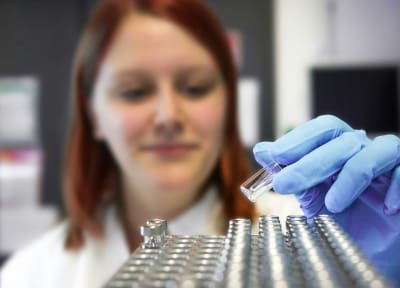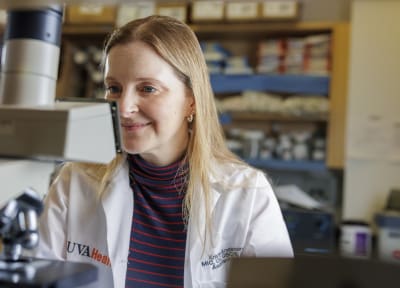Cancer Vaccines
Cancer vaccines work by training the immune system to recognize and respond to cancer-related threats.
On This Page:
Overview
When most people hear the word “vaccine,” they think of protection against viruses like measles or the flu. But did you know that vaccines can also play a role in preventing and treating cancer?
Thanks to advances in immunology, researchers have developed vaccines that help the immune system target cancer—either by preventing infections that lead to cancer, or by helping the body recognize and attack cancer cells that have already formed.
These are known as cancer vaccines, and they fall into two main types: preventive (prophylactic) and therapeutic (treatment) vaccines.
Key Points
- Cancer vaccines work by training the immune system to recognize and respond to cancer-related threats.
- There are two main types: preventive vaccines (which stop virus-related cancers) and therapeutic vaccines (which help treat existing cancers).
- Researchers are now exploring personalized and universal cancer vaccines as part of the next generation of immune-based cancer treatments.
How Do Cancer Vaccines Work?
Cancer vaccines work much the same way as a vaccine you might get for flu or COVID – by stimulating the immune system to respond to a specific target or antigen. In the case of cancer vaccines, this could be a virus linked to cancer (like HPV or hepatitis B) or abnormal proteins found on the surface of cancer cells.
Once the immune system learns to recognize these targets, it can launch a stronger, more focused response—either to stop cancer from forming or to fight it after it has appeared.
Preventive (Prophylactic) Cancer Vaccines
Some cancers can be caused by viruses infecting normal cells. For example, the virus HPV can infect cells, insert new genetic material into the cell’s DNA and cause the cell to grow uncontrollably. This can lead to the development of several cancer types, most notably cervical and throat cancers.
Preventive vaccines protect against infections, such as HPV, that are known to cause cancer. These vaccines train the immune system to recognize and destroy viruses before they can infect cells and lead to cancer over time.
Therapeutic (Treatment) Cancer Vaccines
Therapeutic vaccines are designed to treat existing cancers by helping the immune system better recognize and attack cancer cells. These vaccines introduce the immune system to proteins or molecules (known as antigens) that are found mostly on cancer cells. This helps immune cells—especially T cells—spot and destroy those cancer cells more effectively. Therapeutic cancer vaccines are an area of new research but one vaccine, called Provenge (sipuleucel-T), has been approved for advanced prostate cancer.
What’s Next for Cancer Vaccines?
Cancer vaccines are an exciting and growing field of research. Scientists are exploring how to:
- Combine vaccines with other immunotherapies
Using vaccines alongside checkpoint inhibitors or CAR T cell therapy to boost the immune response. - Personalize cancer vaccines
Creating vaccines tailored to an individual’s unique tumor characteristics, using genetic information or tumor samples. - Improving immune responses in “cold” tumors
Developing strategies to help vaccines work better in tumors that usually don’t trigger much of an immune reaction. - Developing “universal” cancer vaccines
Researchers are exploring vaccines that could target common features found in many types of cancer, not just one. These universal vaccines aim to train the immune system to recognize patterns or proteins shared across multiple cancers—potentially offering broad protection or treatment with a single shot.
Universal cancer vaccines are still an area of early research, but represent a bold goal: a single vaccine that could help prevent or treat multiple cancers by tapping into the shared biology of tumor cells.
Sources
- Jain, A., Marshall, J., Buikema, A., Bancroft, T., Kelly, J. P., & Newschaffer, C. J. (2015). Autism Occurrence by MMR Vaccine Status Among US Children With Older Siblings With and Without Autism. JAMA, 313(15), 1534. https://doi.org/10.1001/jama.2015.3077
- Taylor, B., Miller, E., Farrington, Cp., Petropoulos, M.-C., Favot-Mayaud, I., Li, J., & Waight, P. A. (1999). Autism and measles, mumps, and rubella vaccine: no epidemiological evidence for a causal association. The Lancet, 353(9169), 2026–2029. https://doi.org/10.1016/s0140-6736(99)01239-8
- Madsen, K. M., Hviid, A., Vestergaard, M., Schendel, D., Wohlfahrt, J., Thorsen, P., Olsen, J., & Melbye, M. (2002). A Population-Based Study of Measles, Mumps, and Rubella Vaccination and Autism. New England Journal of Medicine, 347(19), 1477–1482. https://doi.org/10.1056/nejmoa021134
Related Topics
Downloads
External Resources
Latest News


